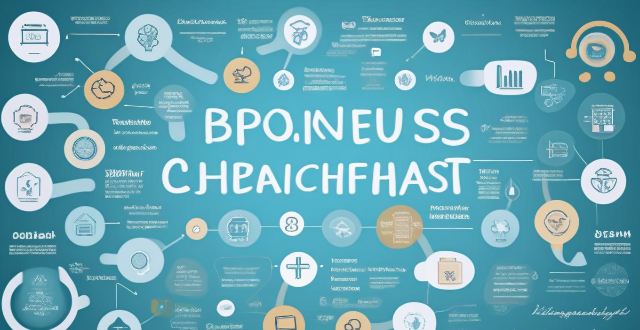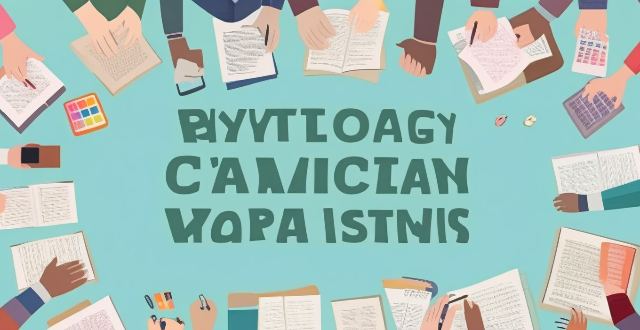Student Scholarship

What are the benefits of receiving a scholarship ?
Receiving a scholarship offers significant advantages, including financial relief through reduced educational costs and increased opportunities for employment. Academically, scholarships provide access to quality education and supportive resources. Personally, they enhance skills and confidence while motivating students. Long-term impacts include better career prospects and societal contribution. Overall, scholarships contribute to success and well-being.

Can I get a scholarship to attend a prestigious tennis training camp ?
Attending a prestigious tennis training camp can be an excellent opportunity for aspiring athletes to improve their skills and gain exposure to top-level coaching. However, the cost of such camps can be prohibitive for many players. In this article, we will explore whether it is possible to obtain a scholarship to attend a prestigious tennis training camp. Scholarships are financial aid awards that help students pay for college or university tuition fees, books, and other related expenses. They are typically awarded based on academic merit, financial need, or specific talents, such as athletic ability. There are various types of scholarships available, including need-based scholarships, merit-based scholarships, and athletic scholarships. To be eligible for a tennis training camp scholarship, you must demonstrate exceptional athletic ability in tennis. This may include having a high ranking in your age group, winning tournaments, or receiving recognition from coaches or scouts. Most prestigious tennis training camps also require applicants to have a certain level of academic achievement. The first step in applying for a tennis training camp scholarship is to research the available opportunities. This can involve searching online, contacting tennis organizations, or speaking with coaches and mentors in the sport. Once you have identified potential scholarships, you will need to prepare your application materials, which may include transcripts, letters of recommendation, essays or personal statements, and an athletic resume. Obtaining a scholarship to attend a prestigious tennis training camp is certainly possible but requires careful planning and preparation. By understanding the eligibility criteria, researching available scholarships, and preparing a strong application package, you can increase your chances of securing funding for your tennis training goals.

How do I write a successful scholarship application letter ?
This guide provides tips on how to write a successful scholarship application letter, including an introduction that grabs the reader's attention and highlights academic achievements, extracurricular activities, and community involvement. The body of the letter should focus on these areas, highlighting strengths and accomplishments, while the conclusion summarizes main points and reiterates why the candidate is a strong choice for the scholarship. The closing should be polite and include contact information.

What are the tax implications of receiving a scholarship ?
Receiving a scholarship can offset higher education costs, but understanding the tax implications is crucial. Scholarships for tuition, fees, and educational expenses are typically non-taxable, but those covering personal expenses may be taxed. Accurate record-keeping, separating expenses, consulting tax professionals, and planning ahead are key to managing these implications effectively.

How can I increase my chances of getting a scholarship ?
To increase your chances of getting a scholarship, researchTo increase your chances of getting a scholarship, research strong academic record, engage in engage in extracurricular activities and community service, prepare compelling application materials including personal statements and recommendations, and stay organized throughout the application process.

Can international students apply for scholarships ?
International students can apply for various scholarships offered by universities and organizations to offset the cost of tuition, books, and living expenses. These include merit-based scholarships awarded based on academic or leadership skills, need-based scholarships considering financial situation, athletic scholarships, diversity scholarships, and first-generation college student scholarships. External organizations like the Fulbright Program and Rotary International also provide opportunities. To apply, research available scholarships, review requirements, prepare application materials, apply early and regularly, and seek additional funding sources.

How do I maintain my scholarship eligibility ?
Maintaining scholarship eligibility is crucial for students who rely on financial aid to fund their education. To keep your scholarship, it is important to focus on academic performance, GPA maintenance, community involvement, and financial responsibility. Some tips include attending all classes, participating actively, managing time effectively, seeking help when needed, monitoring grades, staying organized, studying consistently, getting involved in campus organizations, showing leadership skills, giving back to the community, budgeting wisely, seeking additional funding, avoiding debt, and saving for emergencies. By following these tips, you can maintain your scholarship eligibility and continue receiving financial aid for your education.

Are there any scholarships available for part-time students ?
Part-time students face unique challenges when it comes to financing their education, but there are still scholarships available for them. Need-based scholarships are awarded based on financial need, while merit-based scholarships are awarded based on academic achievement or other criteria. Employer tuition assistance programs may also be an option for part-time students. Tips for applying for scholarships as a part-time student include starting early, being prepared, and following instructions carefully.

What are the different types of scholarships available ?
Scholarships are financial aid awards that help students cover the costs of college or university education. They come in various forms, each targeting different groups of students based on merit, need, athletic ability, artistic talent, diversity, subject matter, leadership skills, community service, corporate affiliation, local organization membership, religious background, international study goals, and specific career training. Examples include the National Merit Scholarship for academic achievement, Federal Pell Grants for financial need, NCAA athletic scholarships for sports prowess, the Presidential Scholarship in the Arts for artistic talent, the Hispanic Scholarship Fund for diversity, Health Professions Scholarship Program for subject-specific majors, Jack Kent Cooke Foundation Scholarships for leadership and community service, Coca-Cola Scholars Program for corporate relations, Kiwanis Club scholarships for local community members, Catholic Education Foundation Scholarships for religious affiliation, Fulbright Program for international studies, and Nurse Corps Scholarship Program for career-specific training.

How does a strong emphasis on athletics affect student performance in other subjects ?
The text discusses the various ways in which a strong emphasis on athletics can influence academic achievements, considering factors such as time allocation, mental health, motivation, and social dynamics. While it can present challenges such as reduced study time and increased stress, it also offers benefits like improved time management and enhanced motivation. Schools and educators should strive to create a balanced environment where both athletics and academics are supported, ensuring that students can excel in all aspects of their education.

Are there alternatives to taking out a student loan for college expenses ?
There are several alternatives to student loans for covering college expenses, including scholarships and grants, work-study programs, employer tuition assistance, military benefits, and crowdfunding and community support. Scholarships and grants are typically awarded based on academic merit or financial need, while work-study programs allow students to earn money through part-time jobs. Employer tuition assistance programs may cover all or a portion of tuition costs, and serving in the military can provide access to educational benefits like the GI Bill. Crowdfunding platforms and community organizations can also provide financial support for students in need.

Can extracurricular activities help in getting scholarships for college ?
**Extracurricular Activities and College Scholarships** This article explores the role of extracurricular activities in securing scholarships for college. It highlights how these activities help in developing essential life skills, showcasing talents, and building a strong resume, which are highly valued by scholarship committees. The article also discusses specific ways in which extracurricular activities can aid in getting scholarships, such as demonstrating leadership skills and academic achievements, enhancing personal statements, and increasing scholarship opportunities. Overall, it emphasizes the importance of participating in extracurricular activities throughout one's academic journey to improve chances of receiving college scholarships.

Are there any scholarships available for online courses ?
Scholarships for online courses can help make education more accessible and affordable. General, subject-specific, diversity, and need-based scholarships are available. To apply, research opportunities, review eligibility criteria, gather required documents, complete the application process, and follow up on your application.

How do I apply for a scholarship ?
The text provides a step-by-step guide on how to apply for a scholarship, emphasizing the importance of research, eligibility criteria, required documents, application form completion, essay writing, and submission. It stresses the need for accuracy, thoroughness, and timeliness in the application process.

Can I apply for multiple scholarships at the same time ?
Applying for multiple scholarships at the same time is allowed and encouraged to increase financial assistance chances. It's important to research each scholarship's requirements, deadlines, and customize applications accordingly. Tips include creating a spreadsheet, seeking help, and prioritizing applications based on various factors.

What are the common mistakes to avoid when applying for scholarships ?
When applying for scholarships, it's important to avoid common mistakes that could harm your chances of receiving financial aid. Key points include ensuring accuracy and completeness of your application, submitting on time, writing clear and tailored essays, meeting eligibility criteria, customizing each application, seeking recommendations early, showing financial need, not overlooking smaller awards, following up appropriately, and maintaining integrity without plagiarism or dishonesty. By avoiding these pitfalls, you can present yourself as a diligent and deserving candidate for scholarship opportunities.

What are the pros and cons of taking out a student loan ?
Student loans can help students afford college, but also come with long-term debt and limited job opportunities.

How can educational technology enhance student engagement ?
The text discusses how educational technology can enhance student engagement. It outlines various methods such as personalized learning, interactive content, collaborative tools, real-time feedback, and flexible learning options that educators can use to improve student participation and performance in the classroom.

How do I renew my scholarship for the next academic year ?
To renew your scholarship for the next academic year, you need to understand eligibility criteria, note deadlines, gather necessary documents, submit your application, and follow up. If not approved, explore alternative funding or appeal.

Do any restaurants offer student discounts ?
Students often look for ways to save money, and one such way is by utilizing student discounts offered by various establishments, including restaurants. In this response, we will explore if there are any restaurants that offer student discounts and what benefits they provide. Yes, there are several restaurants that offer student discounts, which can vary from place to place and may not be advertised openly. Therefore, it is important to ask the staff or check their website before visiting. The benefits of student discounts at restaurants include saving money, trying new places, socializing, and convenience. To find out if a restaurant offers student discounts, you can check their website, ask the staff, or search online. Examples of restaurants that offer student discounts include McDonald's, Subway, Pizza Hut, Dairy Queen, and Burger King. In conclusion, there are several restaurants that offer student discounts, which can help students save money while enjoying a meal out with friends or family. By checking the restaurant's website, asking the staff, or searching online, you can find out if a restaurant offers student discounts and take advantage of them.

How does educational psychology impact student learning ?
Educational psychology plays a crucial role in understanding and enhancing student learning. It helps educators understand cognitive development, enhance motivation and engagement, promote social-emotional learning, address diverse learning needs, and evaluate teaching strategies and interventions. By incorporating insights from educational psychology into their practice, teachers can create a more effective and supportive learning environment for all students.

How do student loans impact credit scores ?
Student loans can significantly impact credit scores, positively throughStudent loans can significantly impact credit scores, positively through diversified credit mix, and Best practices for managing student loans include making payments on time, keeping balances low, and exploring forgiveness or repayment options to protect and enhance financial standing.

How can educational psychology improve teacher-student relationships ?
Educational psychology can enhance teacher-student relationships by promoting empathy, clear communication, effective classroom management, emotional intelligence, cultural competence, personalized instruction, and collaboration. Understanding diverse student needs, active listening, consistent messaging, feedback, clear boundaries, fair discipline, self-awareness, managing emotions, inclusivity, adaptability, tailored instruction, personalized attention, parental involvement, and peer support are all strategies that contribute to a positive learning environment.

How do interest rates on student loans work ?
Interest rates on student loans are the percentage of the loan amount that borrowers must pay in addition to the principal balance. The interest rate is determined by the lender and can vary based on factors such as creditworthiness, type of loan, and repayment term. There are two main types of student loans: federal and private. Federal student loans have fixed interest rates that are set by Congress each year, while private student loans have variable or fixed interest rates that are determined by the lender. Interest on student loans begins to accrue as soon as the loan is disbursed, and there are several repayment options available for student loans. By choosing the right type of loan and repayment plan, you can minimize your interest costs and pay off your student loans more efficiently.

How do online learning platforms enhance student engagement and performance ?
The article discusses how online learning platforms enhance student engagement and performance. It mentions personalized learning experiences, interactive content and multimedia, collaboration and communication tools, gamification and rewards, flexibility and convenience, and immediate feedback and support as key features of these platforms that contribute to improved student outcomes.

How do I find scholarships specific to my field of study ?
Finding scholarships specific to your field of study can be a challenging task, but it is definitely worth the effort. Here are some steps you can take to find scholarships that match your academic interests and career goals: 1. Research your field thoroughly to identify key organizations, associations, and institutions that offer scholarships related to your area of interest. 2. Use online scholarship search engines such as Fastweb, ScholarshipOwl, and Cappex to find scholarships based on your academic achievements, extracurricular activities, and career goals. 3. Check with your school's financial aid office for information about scholarships specific to your field of study and resources such as scholarship databases or lists of local organizations that offer scholarships. 4. Attend scholarship workshops and events hosted by your school or local community organizations to network with professionals in your field and learn about scholarship opportunities. 5. Contact professional organizations and associations in your field directly to find out about available scholarships and application requirements.

How can educational institutions use data analytics to improve student outcomes ?
Educational institutions can use data analytics to improve student outcomes by identifying areas of focus such as performance tracking, curriculum analysis, and student engagement. Implementing data-driven strategies like personalized learning, predictive analytics, and resource allocation can further enhance student success. Continuous evaluation and collaboration are key to measuring success and making necessary adjustments.

What happens if I can't repay my student loans ?
Student loans are a common way for individuals to finance their education. However, what happens if you are unable to repay your student loans? This article will explore the consequences of not being able to repay your student loans and provide some suggestions on how to avoid these consequences. If you fail to make payments on your student loans, you will eventually default on your loans. This means that you have failed to make payments for a certain period of time, usually 270 days. Once you default on your loans, the following consequences may occur: - Damage to Your Credit Score: Your credit score will be negatively impacted, which can affect your ability to obtain credit in the future. - Wage Garnishment: The government or your lender may take legal action against you to garnish your wages, which means taking a portion of your paycheck to cover the debt. - Tax Refund Offset: The government may also take a portion of your tax refund to cover the debt. - Loss of Eligibility for Future Financial Aid: You may lose eligibility for future financial aid, including grants and scholarships. In addition to the above consequences, the government or your lender may take legal action against you to recover the debt. This can result in additional fees and court costs, as well as potential damage to your reputation and career prospects. Failing to repay your student loans can have a negative impact on your future opportunities, including difficulty renting an apartment, getting hired, or starting a business. To avoid the consequences of not repaying your student loans, consider the following suggestions: - Create a Budget: Create a budget that includes your monthly expenses and income, and prioritize paying off your student loans as soon as possible. - Explore Repayment Options: Talk to your lender about different repayment options that may be available to you, such as income-driven repayment plans or deferment/forbearance options. - Seek Professional Help: If you are struggling with repayment, seek professional help from a financial advisor or credit counselor who can provide guidance on managing your debt. - Stay in Touch with Your Lender: Keep in touch with your lender and communicate any changes in your financial situation that may affect your ability to repay your loans. - Consider Consolidation or Refinancing: If you have multiple loans with different interest rates and terms, consider consolidating or refinancing them into one loan with a lower interest rate and more manageable repayment terms.

How do I apply for a student loan ?
This text provides a comprehensive guide on how to apply for a student loan. It outlines nine steps, including determining needs, researching loan options, checking eligibility requirements, gathering documents, completing and submitting the application form, waiting for approval, signing promissory notes and loan agreements, and receiving disbursement of loan funds. The guide emphasizes the importance of understanding different loan options and their terms and conditions before applying. It also highlights the need to gather all necessary documents and provide accurate information in the application form. Overall, this text is an essential resource for students seeking financial assistance for their education.

What factors determine the amount of a student loan ?
The amount of a student loan is determined by several key factors, including eligibility criteria set by the lender, the cost of attendance at the chosen school, the student's financial need, and the type of loan (federal or private). Other influential factors include repayment options, school choice, and the availability of other financial aid. Students should consider all these elements and explore all possible funding options before taking out a loan.